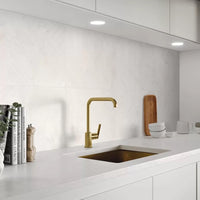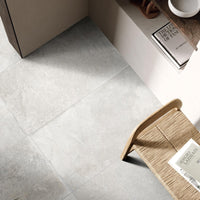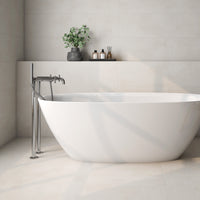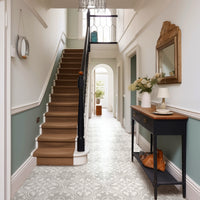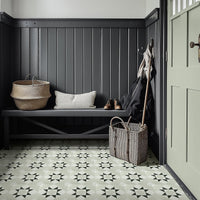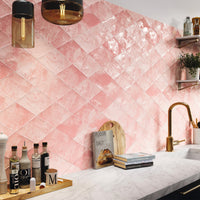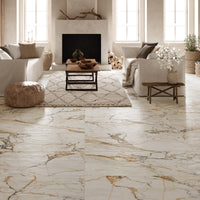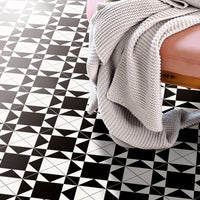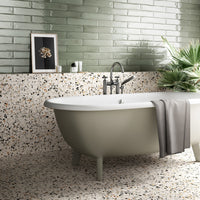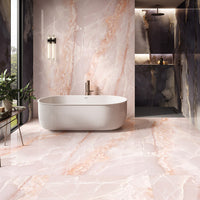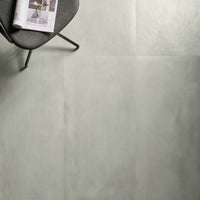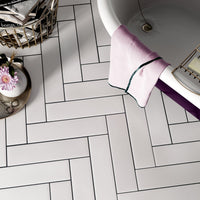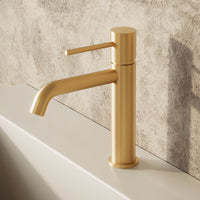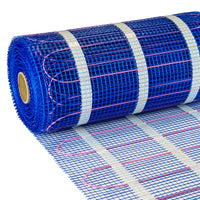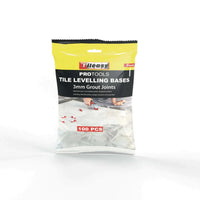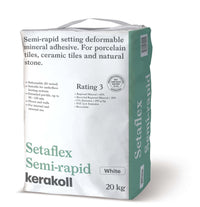There’s often a fair bit of confusion surrounding the differences between porcelain and ceramic tiles. Some will have you believe they’re one and the same, while others will spin you the line that they’re worlds apart and shouldn’t be mentioned in the same breath. It can all become a bit perplexing. In reality, the truth sits somewhere between those two assertions. They are indeed very similar but there are some subtle - and important - differences that set them apart.
At A Glance - Porcelain vs Ceramic Tiles
| Ceramic tiles | Porcelain tiles | |
| Construction | Red, brown or white clay. Softer, less dense. | White clay, sand, feldspar. Harder, more dense. |
| Pros | Easier to cut, cheaper. | Absorbs less water, stain resistant, more hardwearing. |
| Cons | Absorbs more water (prone to cracking in cold weather), more prone to stains, less stain resistant, less hard-wearing. | More expensive, trickier to cut and shape, more brittle. |
| Best used for | Walls, areas with little moisture, areas with light footfall or abrasion. | Areas with higher moisture levels, areas with higher footfall or abrasion. |
| Cost | Cheaper | More expensive |
| Colour | Colour only on glaze, different underneath. | Runs through whole tile, can have a glaze on top. |
| Ease of use | Easier to cut. | May require specialist expertise to cut. |
| Suitable for exterior use | No | Yes |
The Difference Between Porcelain Tiles And Ceramic Tiles
The difference between porcelain and ceramic tiles lies in their genetic makeup.
Ceramic tiles are made using natural red, brown or white clay, baked at high temperatures to reduce water content, and then the patterned glaze is applied.
Porcelain tiles are produced in largely the same way, except using only white clay. Finely-ground sand and feldspar is also added into the clay mixture, and then fired at higher temperatures than ceramic tiles. The result is a harder, much more dense tile, which is less porous.
It’s this permeability of the tile which ultimately dictates whether it’s classed as ceramic or porcelain.
All tiles are subject to a water absorption test to determine how porous they are. The tiles are weighed and then submerged in water for a period of time. Those tiles that weigh 0.5% more after being put in water, having obviously absorbed some, are classed as ceramic. Consequently, those that are denser and weigh less than 0.5% more are classed as porcelain.
In a way the distinction between the two is made after the manufacturing process rather than before.
There are then two different types of porcelain tile – through-body porcelain tiles and glazed porcelain tiles.
Through-body tiles (also known as full-body or homogeneous tiles) have no glaze on them and are the same design and colour all the way through. Glazed tiles, as the name suggests, have a painted glaze on top which gives the tile its pattern and colour. If you look at the majority of these Moroccan tiles, the glaze is added on top of the tile body.
Should you choose through-body or glazed tiles? In high-traffic areas, such as hallways, through-body tiles may well be a better option. This is because chips and dents in glazed tiles are much more noticeable as the colour underneath shows through. With full-body tiles, chips are much less noticeable as it’s the same colour all the way through.
NOTE – while porcelain tiles are harder and more dense, this also makes them more difficult to cut and shape. Ceramic tiles can be cut much more easily by hand using a wet tile saw or snap tile cutter, while porcelain tiles require much more experience in order to get a clean, accurate cut.
Should You Choose Porcelain Or Ceramic Tiles?
For most applications, you should be fine choosing either ceramic or porcelain tiles. However, there are certain instances in which one is more suitable than the other.
Areas with high levels of moisture
As we mentioned above, porcelain tiles absorb less water than ceramic tiles and are therefore more suited to areas with high levels of moisture. The most obvious example is the bathroom, where there is likely to be water on the floor and in the air, but you might also want to consider porcelain floor tiles in the kitchen in case of spillages – a low absorption rate also means that porcelain tiles are less prone to staining.
Areas with high footfall or abrasion
Porcelain tiles are harder than ceramic tiles and can better withstand the abuse of higher footfall or abrasion, so are good choices for entrance ways, hallways and utility rooms. Ceramic tiles are slightly more likely to chip, exposing the different colour tile under the glaze.
If you have a children or pets, then porcelain tiles will be better at standing up to wear and tear, particularly if you use through-body tiles.
Ceramic should be fine for wall tiles in these areas, however.
Outdoors
If you want to tile outdoors, either as a patio or on a balcony, then you should definitely use porcelain tiles. Being less porous, porcelain tiles will hold up better in rain and other precipitation, which is incredibly important in cold weather – if the moisture freezes then it will expand, which could cause the tile to crack.
The PEI Rating
An excellent way of quickly identifying which tiles are right for your home, is to go by the Porcelain Enamel Institute rating (PEI rating), which goes as follows:
PEI 0 – No foot traffic (wall tiles)
PEI 1 – Very light traffic (rooms with infrequent use, e.g. bathroom)
PEI 2 – Light traffic (e.g. bathroom and bedroom)
PEI 3 – Light to moderate traffic (should be suitable for most domestic floors)
PEI 4 – Moderate to heavy traffic (fine for domestic floors and some commercial applications)
PEI 5 – Heavy traffic (all domestic/commercial uses with heavy footfall)
Most ceramic tiles will have a PEI rating over between 3 and 4, while porcelain tiles will usually be harder, with a PEI rating between 3 and 5.
